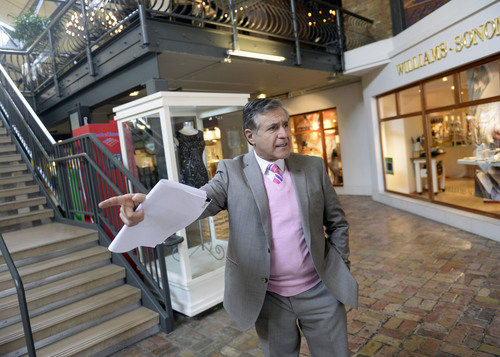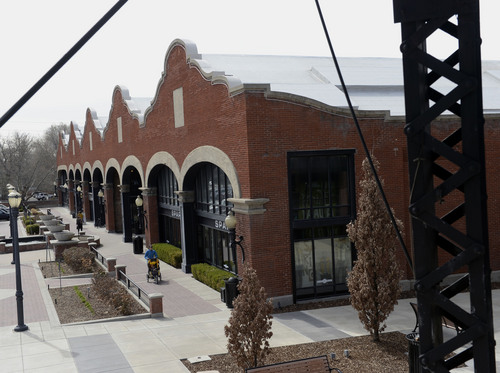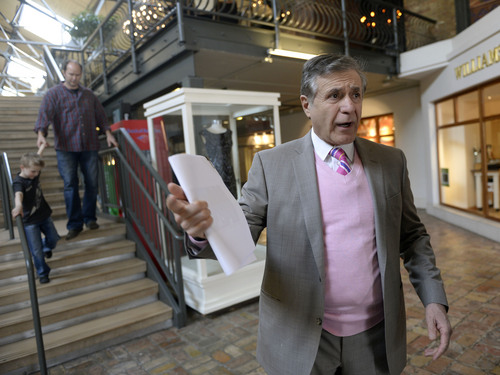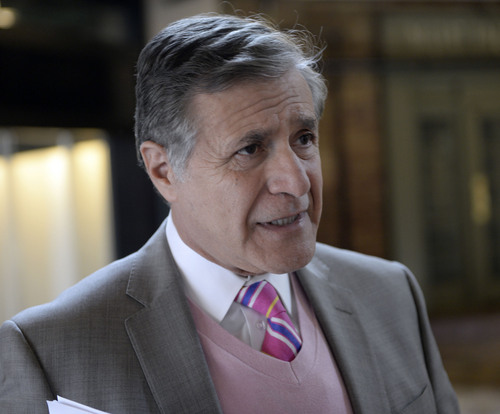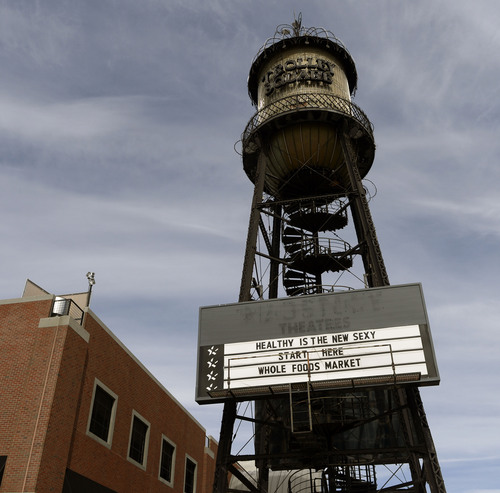This is an archived article that was published on sltrib.com in 2014, and information in the article may be outdated. It is provided only for personal research purposes and may not be reprinted.
Utah industrialist Khosrow Semnani likes success — and he expects it.
The self-made millionaire who pioneered the disposal of low-level radioactive waste in Tooele County in the late 1980s is now applying his business acumen to Salt Lake City's historic Trolley Square.
The venerable retail center has suffered its share of tough times, including a February 2007 mass shooting and, soon after that, a makeover that now appears less than inspired.
Although the shopping center has a 44 percent vacancy rate, Semnani is confident he can succeed where others have failed.
Despite the ups and downs, the landmark trolley barns that were converted to a popular shopping mall four decades ago still have a certain organic ambience and hold a special place for many Salt Lakers.
"This place has a huge asset — it's the good will of the people," said the dapper Iranian-born businessman on a recent tour of the red-brick structures he bought a year ago.
In November 2012, Bank of America took Trolley Square into receivership after alleging that then-owner Portland-based ScanlanKemperBard Cos. owed it and other lenders $57 million.
Semnani's SK Hart Properties picked up the quaint shopping mall for what he called "the right price."
"The Trolley experience is what we are promoting — the local urban-village personality," said Semnani, a naturalized citizen who has made Utah his home since 1968.
—
Business plan • During the next few years, he said he will pump $3 million to $4 million into sprucing up the place and bringing down the vacancy rate.
"Those other businesses were risky," he said of his west-desert repositories for hazardous materials at Grassy Hill and Envirocare (now EnergySolutions). "But this I feel very confident with. There are already successful businesses here. All I have to do is renovate and rehabilitate it."
But Semnani, 66, is locked in a battle with Salt Lake City's Historic Landmark Commission (HLC) about some of the changes he wants to make.
Among them is his proposal for an electronic sign on Trolley's water tower. The tower's present signs are left over from a bygone period when the barns housed movie theaters. The HLC gave a thumbs down to the electronic-sign proposal.
Semnani is appealing the denial and seems genuinely puzzled that the HLC is standing in the way of his revitalization efforts. "This is a retail place and has to attract people," he said of his proposed sign. "This place is an asset, but I don't get that feeling from City Hall."
The HLC also is asking Semnani to modify lighting and some design aspects of a long awning he has planned for the walkway between the new Whole Foods Market building and the trolley barns.
The most recent attempt at renewing Trolley Square, including the 60,000-square-foot box that houses Whole Foods, is making the challenge more troublesome for Semnani's designers and the HLC, said Kirk Huffaker of the Utah Heritage Foundation.
"Crafting the right design solution now becomes even more difficult," Huffaker said. "What I've heard in the community is people asking, 'Is this the next project that can make [Trolley Square] happen?' But the question is being asked in a harsh way, because the last project wasn't [successful]."
The Whole Foods building is criticized by many as blocking the views of the trolley barns and is designed such that it doesn't entice grocery shoppers into the rest of the 315,000-square-foot shopping area.
In the end, the Whole Foods building has done little to enhance the identity of Trolley Square, said Jason Mathis of the Downtown Alliance business group. And Trolley will succeed or fail, he added, on its identity.
—
Retail zigzag • For the past 15 years, Mathis noted, people have wondered "how much retail Salt Lake City can support." During that period, retail activity has zigged from Main Street to The Gateway mall on 400 West and zagged back to Main Street with the coming of City Creek Center.
Trolley Square has bumped along during that time frame with periodic injections of high-profile retailers, such as Pottery Barn and Williams-Sonoma, while stalwarts the likes of The Old Spaghetti Factory and Desert Edge Brewery have kept a steady clientele. Additions of local shops, such as Weller Book Works and Tabula Rasa, have added to the place's flavor. But foot traffic isn't what it was in Trolley's heyday.
Online shopping has changed the dynamics of the retail economy locally and nationally, Mathis noted.
It's not a question of how much retail the community can support, as much as it is which places can offer an "experience" shoppers can't get elsewhere.
"There has to be a social element, an entertainment element," he said. "Trolley is in the midst of determining what that experience will be. And because Khos [Semnani] is a local, he will be better equipped at creating that experience."
Semnani isn't specific about which businesses he hopes to attract, except to say he wants to bring in a variety of local businesses that will add to Trolley's appeal.
"Within two years we will be there," he said. "We are getting inquiries [from retailers] every day."
He speaks with passion about his vision that also includes a lawn on the west end of the complex with tables and chairs and a stage that would accommodate small concerts. It also will have a waterfall. It will be a place, he said, where "people will want to come and spend time."
"This place was a jewel of the city for years," he said. "And we have to bring it back."


